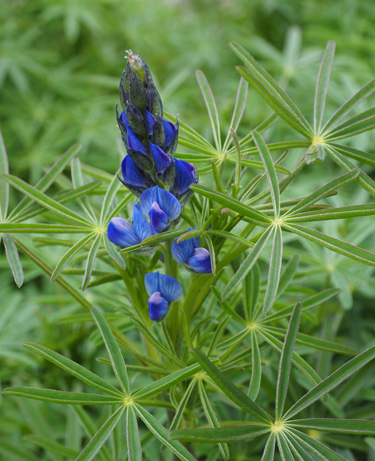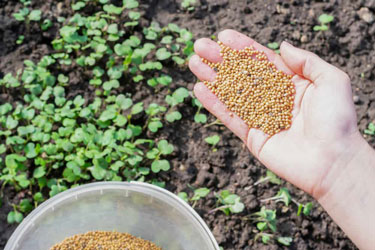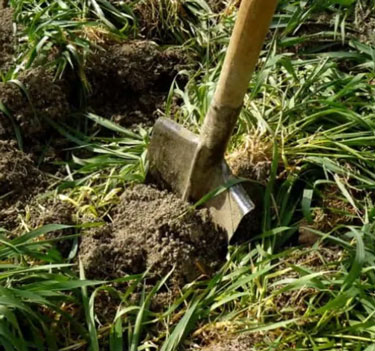Grow a 'green manure' crop
In autumn, harvesting the last of the summer’s tomatoes and cucurbits makes way for winter’s brassicas, onions and root crops. Alternatively, a cover crop is an excellent way to nurture and care for the soil ahead of spring planting.
Covering up
Nature doesn’t like bare soil and will attempt to fill the garden with weeds if left for long enough. For areas not planted in winter crops, there are various ways to keep your garden relatively weed free over the winter. You can spread a thick layer of compost or manure – the deeper the better. During the winter the earthworms will do a lot of the work pulling it into the earth to improve the quality of your soil.
Alternatively, you could plant a ‘green manure’ crop which will crowd out any weeds and then enrich the soil when you dig it back into the garden. Unlike most garden crops, a green manure crop provides all of it’s resources back to the soil.
Green manures work by drawing goodness out of the soil and storing it in the plant’s cells and root nodules. When the plants are then dug back into the soil they rot down and gradually release these nutrients to the next crop in a more readily-available form. Regular use of green manures improves the soil structure, breaking down hard soils and adding organic matter to light soils.
A green manure crop can be grown on empty ground at any point during a growing season. The fast growth and quick turnaround also makes a green manure crop perfect for planting and recharging your entire garden space in the early spring. Depending on the crop selected, the entire process can go from seed to "soil" in as little as 4 to 6 weeks.
Grow your own manure
Cover crops or ‘green manure’ crops, such as lupin, mustard, clover, oats, lucerne, broadbeans and buckwheat are grown from seed. They are fast growing and add value to the garden in a number of ways:
- A green manure crop will give your soil extra organic matter. As well as replenishing valuable nutrients that were taken away with previous crops, the organic matter boosts the overall health of your soil and the vital microorganisms that live within it.
- Green manure crops provide organic matter in-situ; it’s so much easier and cheaper to scatter seeds across your garden than lug heavy bags of compost!
- Because the cover crop plants are grown quite densely, they’ll block the weeds.
- A green manure protects your soil from wind erosion and excessive winter rainfall.
- Instead of bare earth you’ll have attractive greenery to look at over the winter months.
How to grow a green manure crop
- After any crop has been harvested, clear the garden of the old plants and any weeds.
- Dig over the soil and rake level.
- Depending on which cover crop you choose, scatter the seeds at a rate of about 50g of seed per square metre or check the specific instructions on the packet. For larger seeds, cover with a layer of soil.
- Water the seeds in well.
- Unless there is an exceptional dry period, this crop requires no special treatment as it grows.
- Once it begins to flower, or six weeks before you need to use your garden, whichever comes first, chop down your crop with a sharp spade, weed eater, or even your lawn mower if your patch is particularly large.
- Dig all the stalks and leaves into the soil and leave it to decompose and release its nutrients.
It is very important not to allow your cover crop to set seed or it will become a weed in your garden.

5-May-2022

Blue lupin about to flower - dig this crop in now!

Mustard seed and young seedlings

Mustard mature enough to be dug in

Digging in cover crop oats

Red clover

